Teaninich Distillery(9 May 2003)
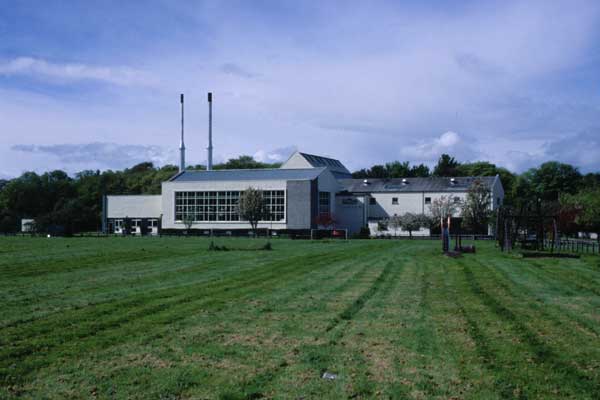
Alnessの町の西側、River Averon沿いにあるTeaninich蒸留所は1817年に創設となっているがAlfred Barnardの著書には1800年と記述されている。Alness周辺は古くからウィスキーの密造が盛んな地域でそのあたりが関係しているのかも知れない。
1934年にUDV社の前身であるScottish Malt Distillersが買収し、1970年代前半には近代的設備に改装され、古い建物はすべて取り壊されてしまった。その時にUDV社の共通仕様である大きなガラス窓のStill Houseが建てられた。
現在はUDV社の中でも最大級の生産能力のある蒸留所で生産能力は約600万リットルとなっている。ちなみに19世紀末は約36万リットルの生産量だった。ドランブイの原酒となっていると聞いたこともあるが定かではない。
Teaninich Distillery, which lies beside River Aberon, west of Alness, was formally established in 1817. However, according to The Whisky Distilleries in UK, written by Alfred Barnard, it was established in 1800. Alness and surrounding areas were very thriving area of making whisky. Teaninich may have been started before.
Teaninich Distillery was taken over by Scottish Malt Distillers Ltd.(present UDV) in 1934, and it was rebuild to modern equipments in the first half of 1970.
Now, Teaninich is one of the most productive distillery in distilleies of UDV and annual output is about 6 million liters, though annual output was about 360,000 liters in the end of 19th.
I’ve heard that Teaninich malt whisky was blended into the Drambuie, but I don’t know for certain.
- タグ別アーカイブ: Alness
-
-
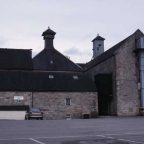 Alness(2)
Alness(2)
Dalmore Distillery(9 May 2003)
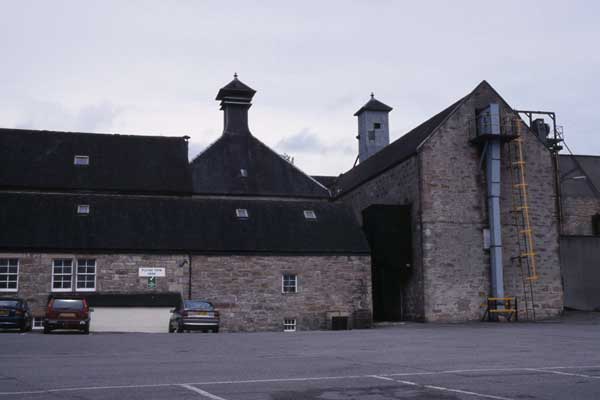
Dalmore蒸留所に着いたのはちょうど昼休み時。事務所には誰もいなかった。予約はしていないのでちょっと心配になる。見学者用施設はないが見学させてくれるはずだ。1時を回ったので再度事務所を訪れるとマネージャが笑顔で出迎えてくれた。さっそく所内を案内してもらう。広い敷地と大きなウェアハウス、そして独特の形をしたポットスティルとキルン。私にとっては非常に印象に残る蒸留所だった。
見学後、事務所に戻って試飲タイム、というよりはマネージャと二人でウィスキーの話をしながらダルモアを飲んだ。英会話を始めてちょうど1年で英語力にはまだ自信がなかったがウィスキー好きの酔っぱらいの間には国境はもちろん言葉の壁もない。
I arrived at Dalmore Distillery about half past twelve, just lunch break. Nobody was in the manager’s office. I didn’t have an appointment, but I thought that I would probably be able to see in distillery.
I visited the manager’s office again around thirteen o’clock, so manager greeted me with a smile. Then he guided me in the distillery.
Dalmore Distillery was on the large site, had large warehouses, unique shape of kiln, and pot stills. I felt Dalmore Distillery was really impressive distillery.
After that, we returned to office and I had a tasting of Dalmore single malt whisky. In a minute, manager also started to drink whisky, and talked about whisky with me. It was like drinking with friends at a pub rather than a tasting. When I visited to Dalmore Distillery, I wasn’t much good at English conversation. However there was no border, no wall of language between the two of whisky drinkers.
-
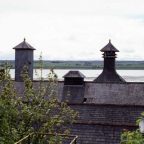 Alness(1)
Alness(1)
Dalmore Distillery(9 May 2003)
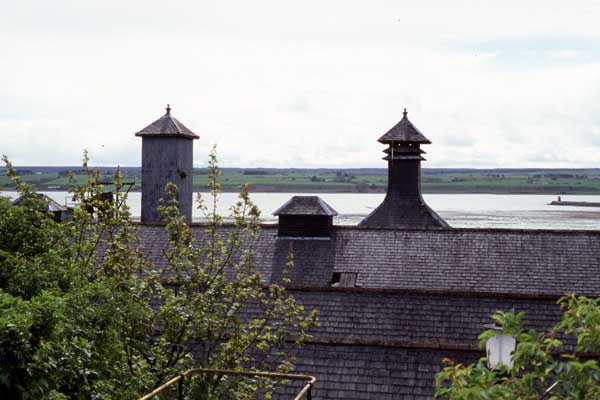
Cromarty Firthに面した海岸に建つDalmore蒸留所は1839年に創設された。1867年にMackenzie一族がオーナーとなり、1960年まで一族での経営がされていた。
第一次大戦中の1917年11月、蒸留所はアメリカ海軍によって接収された。Alness駅からの支線があり、港に近い、そしてウェアハウスが工場に適していたという不運が重なった。また当時の首相Lloyd Georgeが禁酒推進派で酒に対してよいイメージを持っていなかったことも影響しているのだろう。Sir Winston Churchillとはずいぶんと違う。
蒸留所のウェアハウスは、すべての樽を近隣の3蒸留所に移した後、機雷工場に改装された。1918年の終戦までに約32,000個の機雷がDalmoreの港から搬出されている。
1920年6月、蒸留所は1919年2月の機雷爆発事故により壊された部分はそのままで返還された。現在ならば当然賠償請求されるけど、その当時は軍への民間協力は当然だったのだろうか。唯一の救いは他の蒸留所に移送された樽が全く失われることなく戻ってきたことだろう。
Dalmore Distillery lies on the share look out on Cromarty Firth. It was established in 1839 and owned by Mackenzie’s family in 1867. They had operated Dalmore Distillery until 1960.
Dalmore Distillery was took over by American Navy in Novenber 1917, during the World War 1st. Because it had a branch line to Alness Station, near port, warehoses were fit to use as a plant. And I think that it was affected by Lloyd George, Prime Minister of UK at that time. He promoted temperance, he didn’t think that drinking was good for the government and community.
All caskes stored in warehouses were moved to closest three distilleries, and warehouses were converted into plants of mine. About 32,000 of mines had been shipped from pier of distillery until 1918, the end of the World War 1st.
Distillery was returned with warehouses which was broken by explosion of mine in Febrary, 1919. If it was the present time, they would be claimed damages, but they had to work together with military at that time. Fortunately, the casks which were moved other distilleries were came back perfectly.